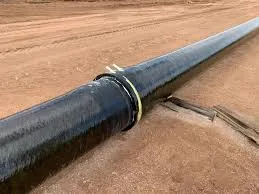
-
 Afrikaans
Afrikaans -
 Albanian
Albanian -
 Amharic
Amharic -
 Arabic
Arabic -
 Armenian
Armenian -
 Azerbaijani
Azerbaijani -
 Basque
Basque -
 Belarusian
Belarusian -
 Bengali
Bengali -
 Bosnian
Bosnian -
 Bulgarian
Bulgarian -
 Catalan
Catalan -
 Cebuano
Cebuano -
 China
China -
 China (Taiwan)
China (Taiwan) -
 Corsican
Corsican -
 Croatian
Croatian -
 Czech
Czech -
 Danish
Danish -
 Dutch
Dutch -
 English
English -
 Esperanto
Esperanto -
 Estonian
Estonian -
 Finnish
Finnish -
 French
French -
 Frisian
Frisian -
 Galician
Galician -
 Georgian
Georgian -
 German
German -
 Greek
Greek -
 Gujarati
Gujarati -
 Haitian Creole
Haitian Creole -
 hausa
hausa -
 hawaiian
hawaiian -
 Hebrew
Hebrew -
 Hindi
Hindi -
 Miao
Miao -
 Hungarian
Hungarian -
 Icelandic
Icelandic -
 igbo
igbo -
 Indonesian
Indonesian -
 irish
irish -
 Italian
Italian -
 Japanese
Japanese -
 Javanese
Javanese -
 Kannada
Kannada -
 kazakh
kazakh -
 Khmer
Khmer -
 Rwandese
Rwandese -
 Korean
Korean -
 Kurdish
Kurdish -
 Kyrgyz
Kyrgyz -
 Lao
Lao -
 Latin
Latin -
 Latvian
Latvian -
 Lithuanian
Lithuanian -
 Luxembourgish
Luxembourgish -
 Macedonian
Macedonian -
 Malgashi
Malgashi -
 Malay
Malay -
 Malayalam
Malayalam -
 Maltese
Maltese -
 Maori
Maori -
 Marathi
Marathi -
 Mongolian
Mongolian -
 Myanmar
Myanmar -
 Nepali
Nepali -
 Norwegian
Norwegian -
 Norwegian
Norwegian -
 Occitan
Occitan -
 Pashto
Pashto -
 Persian
Persian -
 Polish
Polish -
 Portuguese
Portuguese -
 Punjabi
Punjabi -
 Romanian
Romanian -
 Russian
Russian -
 Samoan
Samoan -
 Scottish Gaelic
Scottish Gaelic -
 Serbian
Serbian -
 Sesotho
Sesotho -
 Shona
Shona -
 Sindhi
Sindhi -
 Sinhala
Sinhala -
 Slovak
Slovak -
 Slovenian
Slovenian -
 Somali
Somali -
 Spanish
Spanish -
 Sundanese
Sundanese -
 Swahili
Swahili -
 Swedish
Swedish -
 Tagalog
Tagalog -
 Tajik
Tajik -
 Tamil
Tamil -
 Tatar
Tatar -
 Telugu
Telugu -
 Thai
Thai -
 Turkish
Turkish -
 Turkmen
Turkmen -
 Ukrainian
Ukrainian -
 Urdu
Urdu -
 Uighur
Uighur -
 Uzbek
Uzbek -
 Vietnamese
Vietnamese -
 Welsh
Welsh -
 Bantu
Bantu -
 Yiddish
Yiddish -
 Yoruba
Yoruba -
 Zulu
Zulu
fiberglass stack
Fiberglass Stack The Backbone of Industrial Efficiency
In the realm of industrial applications, the term fiberglass stack may not be familiar to everyone, but it represents a crucial component in various sectors, particularly in power generation and manufacturing. This article delves into the significance, advantages, and applications of fiberglass stacks, demonstrating their essential role in modern industrial processes.
What is a Fiberglass Stack?
Fiberglass stacks are vertical structures used to vent gases generated from industrial processes, such as combustion in boilers or turbines. Constructed from fiberglass-reinforced plastic (FRP), these stacks offer robustness while being lightweight, making them an ideal choice for environments that demand durability and resistance to corrosion. The design of a fiberglass stack enables the safe and efficient passage of exhaust gases into the atmosphere while minimizing the environmental impact.
Advantages of Fiberglass Stacks
1. Corrosion Resistance
One of the primary benefits of fiberglass stacks is their outstanding resistance to corrosion, which is a significant concern in environments where chemical emissions are prevalent. Traditional materials such as steel may succumb to rust and degradation over time when exposed to acidic or alkaline conditions. In contrast, fiberglass stacks maintain their integrity and functionality, ensuring long-term performance without extensive maintenance.
2. Lightweight Nature
Fiberglass stacks are considerably lighter than their metal counterparts, which can reduce the structural load on buildings and support systems. This lightweight nature simplifies the installation process and can lead to cost savings in construction and labor. Furthermore, the ease of handling fiberglass components allows for quicker project timelines and reduces downtime during replacements or repairs.
3. Cost-Effectiveness
In many cases, the initial investment in fiberglass stacks is offset by their long lifespan and reduced maintenance needs. While the upfront cost may be on par with or slightly higher than traditional materials, the long-term savings in maintenance, labor, and replacement contribute to their overall cost-effectiveness. Industries that prioritize budget management benefit significantly from integrating fiberglass stacks into their operations.
4. Thermal Insulation
fiberglass stack

Fiberglass offers inherent thermal insulation properties that help mitigate heat loss or gain during gas transportation. This thermally resistant characteristic can be crucial for facilities where temperature control is vital, contributing to the overall efficiency of industrial processes. By maintaining optimal temperatures, fiberglass stacks not only enhance performance but also support energy conservation efforts.
Applications of Fiberglass Stacks
Fiberglass stacks find applications across various sectors, notably
1. Power Generation
In power plants, fiberglass stacks play a vital role in venting exhaust gases from turbines and boilers. They facilitate the safe release of emissions while complying with environmental regulations. The lightweight and corrosion-resistant properties of fiberglass make it particularly suitable for coastal power facilities, which face harsh environmental conditions.
2. Chemical Processing
In chemical processing plants, fiberglass stacks are indispensable for managing hazardous fumes and emissions. Their ability to resist aggressive chemicals prolongs their lifespan, providing a vital safety feature in industries that handle corrosive substances.
3. Waste Treatment Facilities
Wastewater treatment plants and incineration facilities utilize fiberglass stacks to manage the exhaust from their processes. The durability of FRP ensures these facilities can effectively deal with the emissions generated during treatment, contributing to cleaner operations.
Conclusion
Fiberglass stacks exemplify the principles of modern industrial design, combining efficiency with sustainability. As industries increasingly prioritize environmental responsibility and operational efficiency, the adoption of fiberglass stacks will likely continue to grow. Their inherent advantages—such as corrosion resistance, lightweight nature, cost-effectiveness, and thermal insulation—make them an invaluable asset in various applications.
In summary, fiberglass stacks represent a vital component of the industrial landscape. By facilitating safe emissions management, they help industries mitigate their environmental impact while ensuring compliance with regulations. As technology evolves and the demand for sustainable practices increases, fiberglass stacks are poised to remain at the forefront of industrial innovation.









